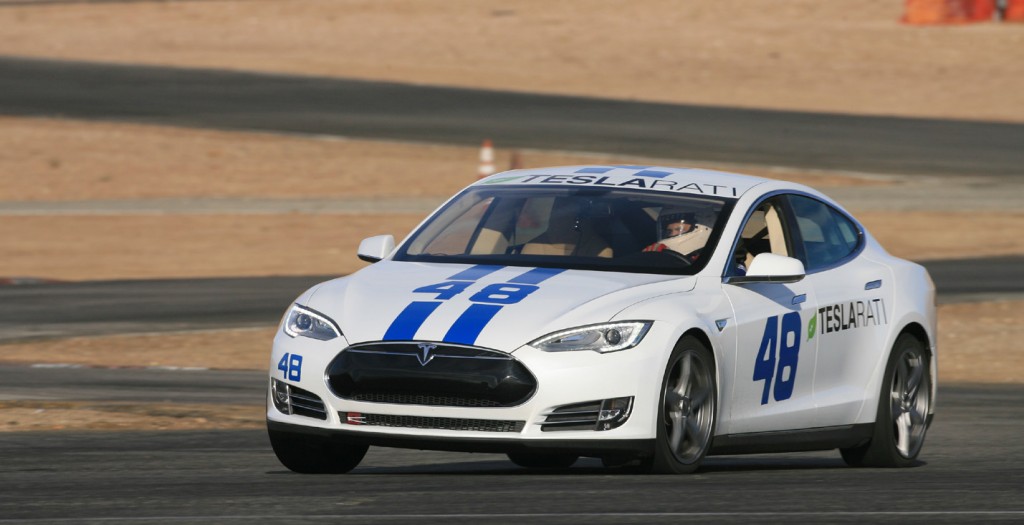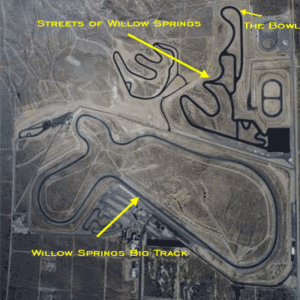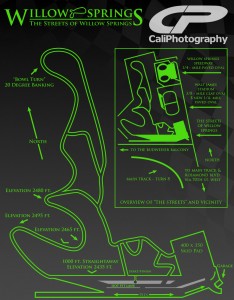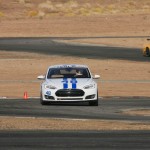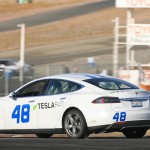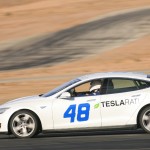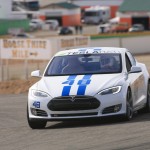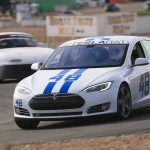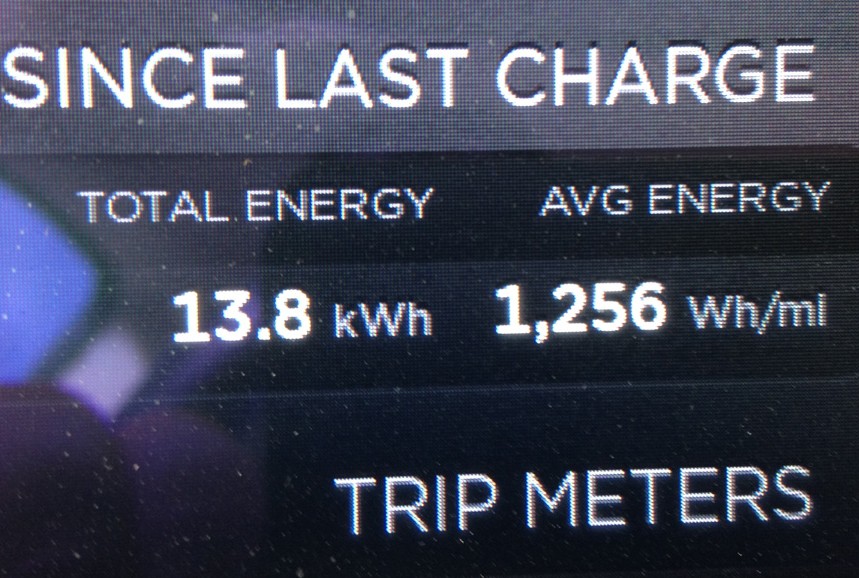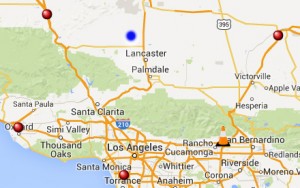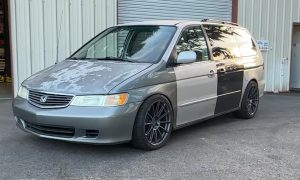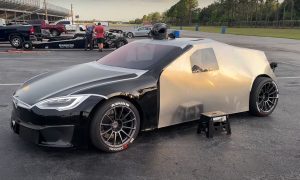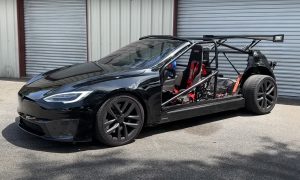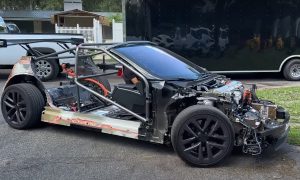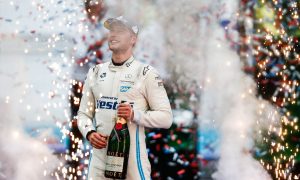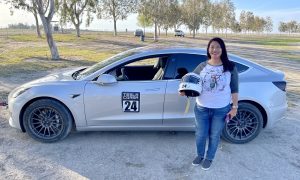Lifestyle
Tesla power limiting may also occur on extreme G-forces
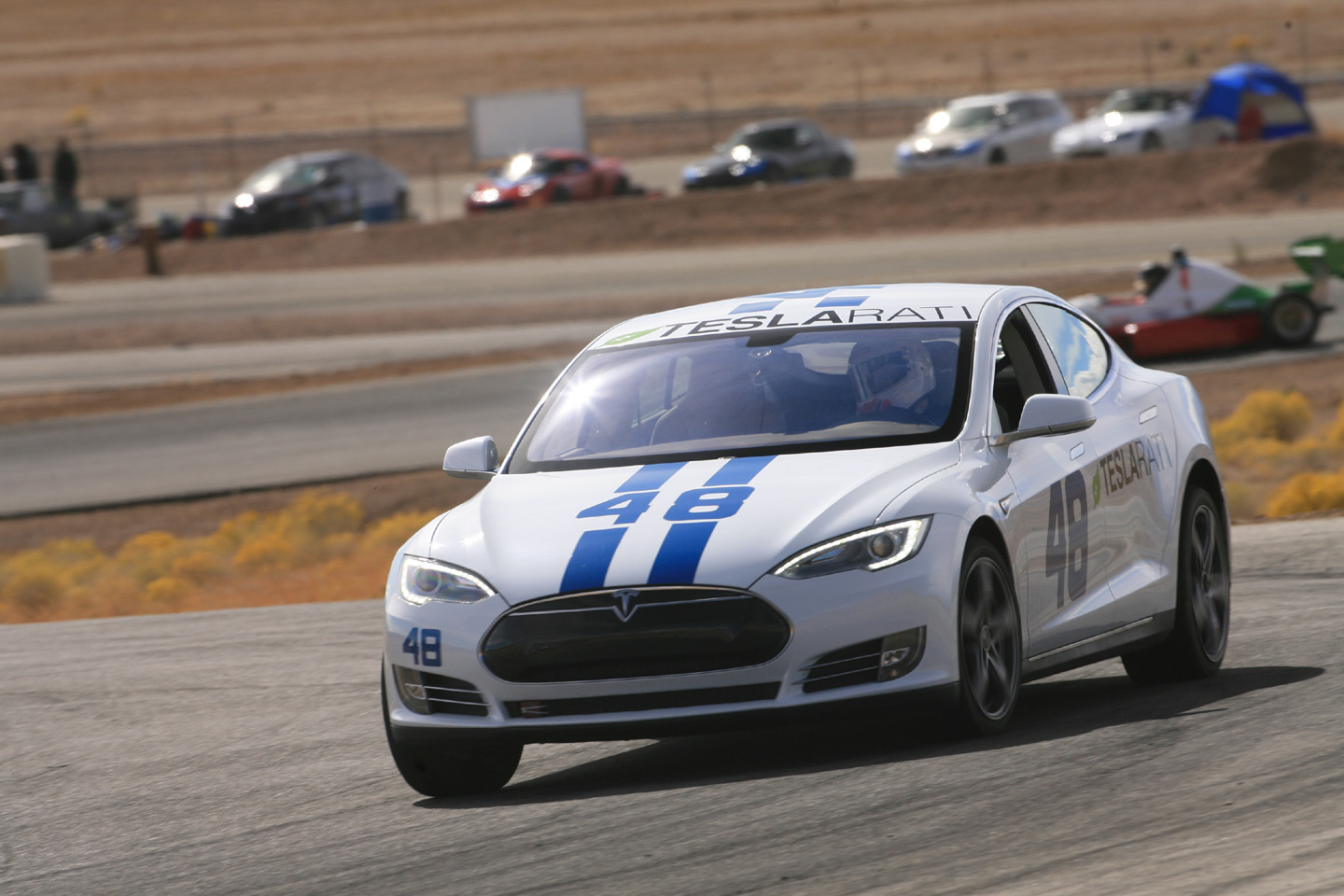
New racetrack discovery indicates Tesla power limiting may go beyond just temperature sensing.
We recently set out to conquer (once more) the Streets of Willow Springs racetrack, a technical, 1.6 miles long, with 13 turns, located approximately an hour north of Los Angeles. Being a short track with a lot of turns (most tracks are 2 to 3 miles long), it’s considered a relatively low speed track. There’s opportunity to briefly reach 100+ mph on straightaways, but most of the time is spent within the 40mph to 80mph range.
Streets of Willow Springs is an excellent track for practicing turns at lower speeds. Unlike our race at Laguna Seca which proved to be one of the more difficult and dangerous tracks we’ve driven, this track had no retaining walls, smooth shoulders and overall a much less dangerous track to race on.
Tesla Model S Configuration
Tesla’s infamous power limiting feature to prevent overheating was not nearly as pronounced this time around because of the short bursty nature of the track. We could easily achieve a full five timed-laps without the dotted power limit line dropping below 160kw mark.
We used a set of new Toyo R888 racing tires (19″, 265 width) this time around as opposed to our usual BFGs. The Toyo’s held up exceptionally well in terms of wear and durability while also providing great traction. It was a cold day (temperature in the 50s) so we kept tire pressure higher than usual, aiming for 36 psi hot.
The Model S experienced a bit of steering wheel lockup through turn 1 (known issue), but it was very short lived.
New Tesla Power Limiting Feature?
A new phenomenon was discovered on the Model S where the vehicle appears to cut power when experiencing high lateral G-forces along, and when the car is angled from flat level ground.
Case in point is the track’s #8 bowl turn which sports a 20 degree bank. This is where we experienced losing power for a brief second or two as we into the bank pushing nearly 1.2 Gs. The behavior can be seen in the video (2:20 min mark) where we were unable to accelerate past 40mph. We speculate that the combination of G-forces and angle from level ground (measured by the vehicle’s internal gyro) might be simulating an accident scenario, hence Tesla’s onboard system disables any additional use of power.
Performance
Best lap time was 1:31, which was a nice improvement over last year’s 1:39. Our Teslarati 48 ran within the Green (Advanced) group with Speed Ventures. The fastest time in the class came in at 1:26 (Formula Mazda) while the slowest was 1:36. We felt that there was still a lot of room for improvement and with a little more practice, we should easily break below 1:30 next time. If not for the power limiting features of the Model S our lap times could be at minimum five seconds faster.
The max lateral G came in at 1.2 G which is on par with what we experienced in the past (using G-Force Rival tires).
Charging and Power Consumption
Power consumption came in at 1.2 kw / mile which translates to approximately 4 rated miles used per 1 actual mile of distance travelled.
There is a set of RV stalls within a 5 minute walk from the Streets. Unfortunately, there was only one stall with a 50 amp outlet which happened to be taken. We ended up pitting one mile away by the garage at Big Willow which had a couple of 240v 50amp outlets.
Travel
There are several possibilities of getting to and from the track.
ALSO SEE: Interactive Tesla Supercharger Map
- Hawthorne Supercharger has been the charger of choice for us thus far. It’s 95 miles away, but because of significant elevation changes, coming to Willow Springs will consume over 110 miles of range, even when driving super conservatively. Coming back it will take only 90 rated miles.
- Oxnard Supercharger just opened which is a little closer to the track at 87 miles away. Coming back will require only 66 rated miles making it a very attractive option.
- Barstow Supercharger is 103 miles away from the track (EV Trip Planner estimated 105). The shortest route seems to be through Victorville, however it used 120 miles of range even while driving very conservatively likely due to the strong winds and elevation changes.
- The Rancho Cucamonga Supercharger that’s currently under construction, appears to be a good option at 93 miles away.
From the North or West
And traveling from the North or West, Tejon Ranch Supercharger is the best option. 60 miles away, requiring 73 rated miles to get there but only 55 back.
Elon Musk
X account with 184 followers inadvertently saves US space program amid Musk-Trump row
Needless to say, the X user has far more than 184 followers today after his level-headed feat.
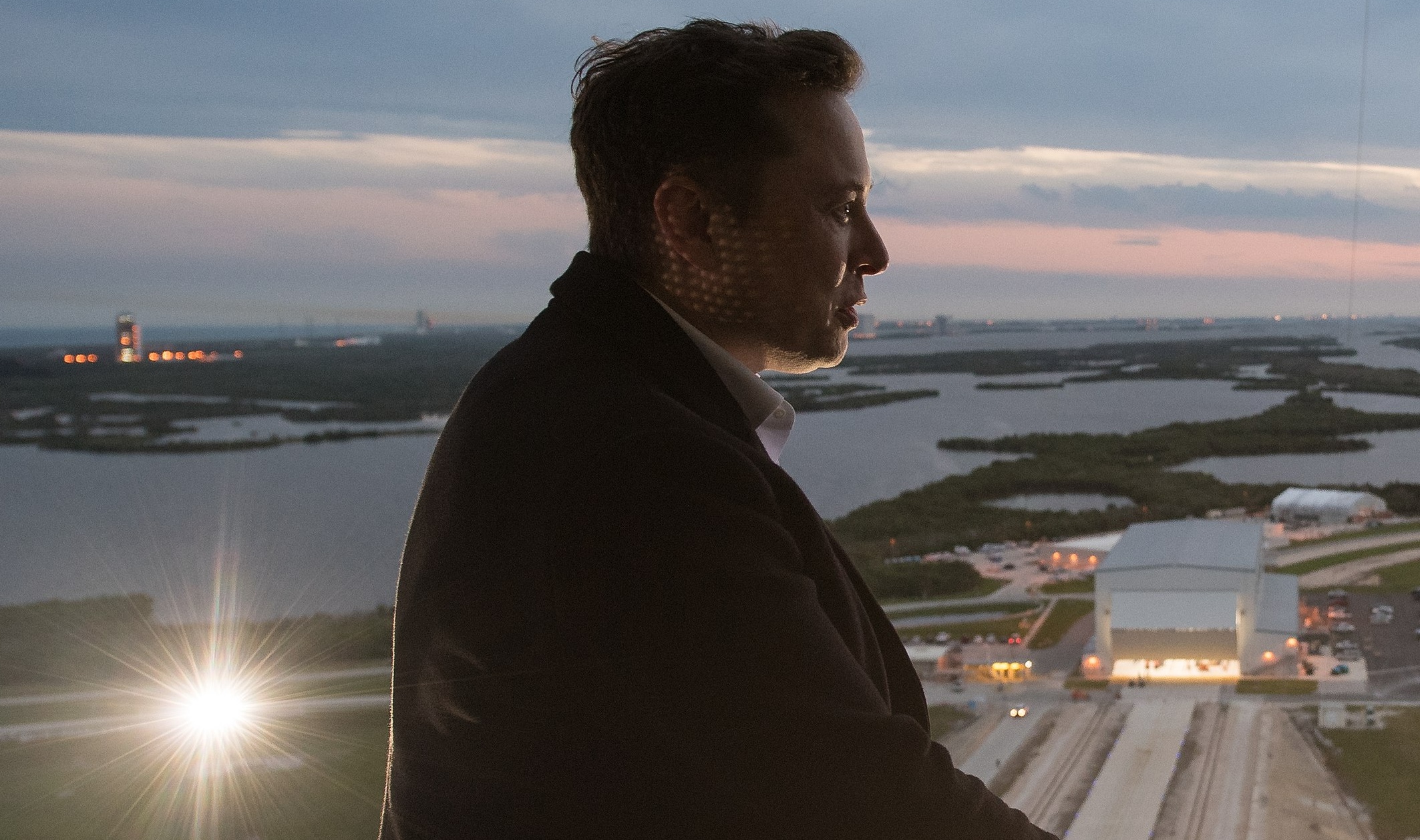
An X user with 184 followers has become the unlikely hero of the United States’ space program by effectively de-escalating a row between SpaceX CEO Elon Musk and President Donald Trump on social media.
Needless to say, the X user has far more than 184 followers today after his level-headed feat.
A Near Fall
During Elon Musk and Donald Trump’s fallout last week, the U.S. President stated in a post on Truth Social that a good way for the United States government to save money would be to terminate subsidies and contracts from the CEO’s companies. Musk responded to Trump’s post by stating that SpaceX will start decommissioning its Dragon spacecraft immediately.
Musk’s comment was received with shock among the space community, partly because the U.S. space program is currently reliant on SpaceX to send supplies and astronauts to the International Space Station (ISS). Without Dragon, the United States will likely have to utilize Russia’s Soyuz for the same services—at a significantly higher price.
X User to the Rescue
It was evident among X users that Musk’s comments about Dragon being decommissioned were posted while emotions were high. It was then no surprise that an X account with 184 followers, @Fab25june, commented on Musk’s post, urging the CEO to rethink his decision. “This is a shame this back and forth. You are both better than this. Cool off and take a step back for a couple days,” the X user wrote in a reply.
Much to the social media platform’s surprise, Musk responded to the user. Even more surprising, the CEO stated that SpaceX would not be decommissioning Dragon after all. “Good advice. Ok, we won’t decommission Dragon,” Musk wrote in a post on X.
Not Planned, But Welcomed
The X user’s comment and Musk’s response were received extremely well by social media users, many of whom noted that @Fab25june’s X comment effectively saved the U.S. space program. In a follow-up comment, the X user, who has over 9,100 followers as of writing, stated that he did not really plan on being a mediator between Musk and Trump.
“Elon Musk replied to me. Somehow, I became the accidental peace broker between two billionaires. I didn’t plan this. I was just being me. Two great minds can do wonders. Sometimes, all it takes is a breather. Grateful for every like, DM, and new follow. Life’s weird. The internet’s weirder. Let’s ride. (Manifesting peace… and maybe a Model Y.)” the X user wrote.
Lifestyle
Tesla Cybertruck takes a bump from epic failing Dodge Charger
The Cybertruck seemed unharmed by the charging Charger.
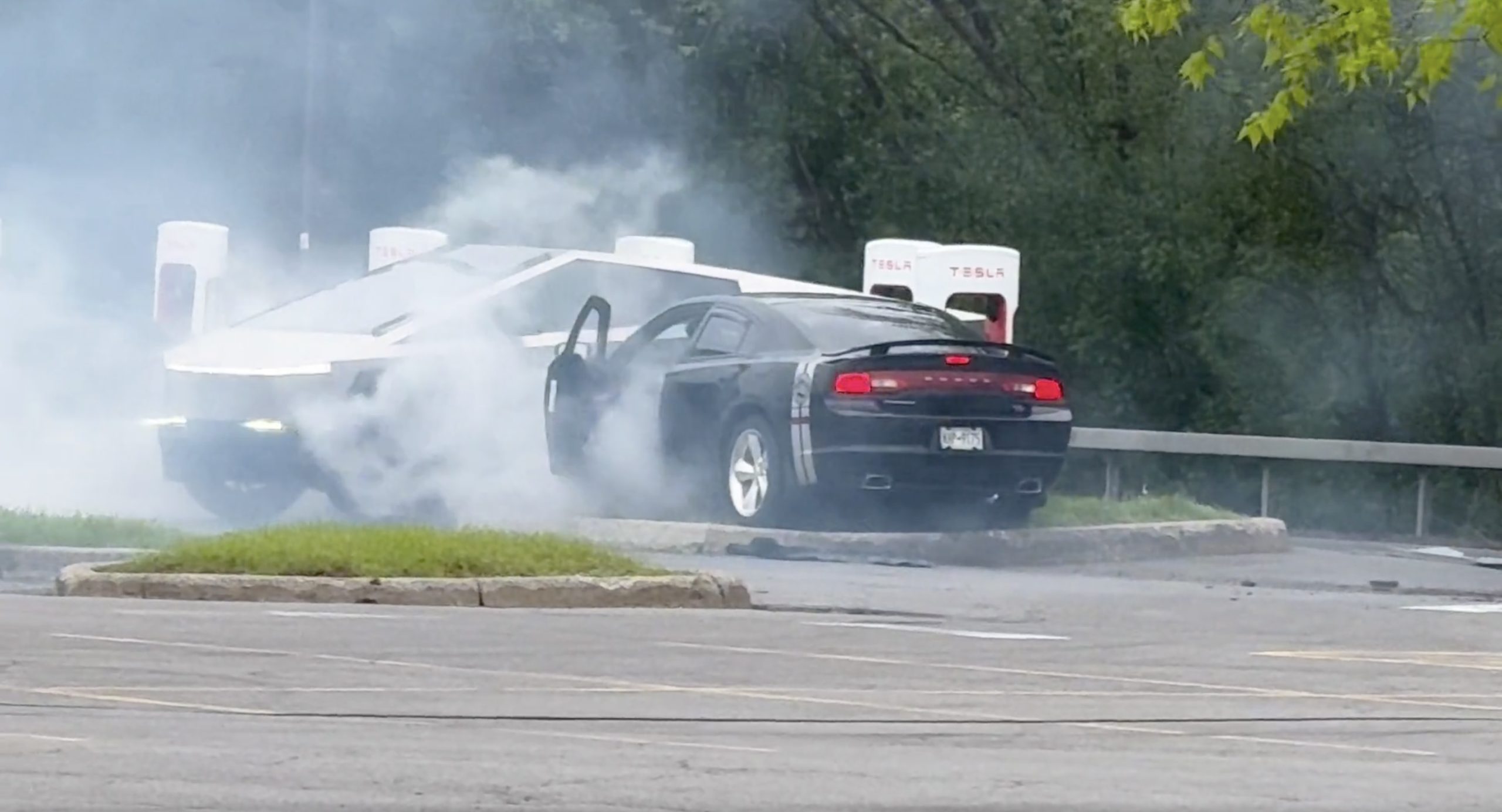
There comes a time in a driver’s life when one is faced with one’s limitations. For the driver of a Dodge Charger, this time came when he lost control and crashed into a Tesla Cybertruck–an absolute epic fail.
A video of the rather unfortunate incident was shared on the r/TeslaLounge subreddit.
Charging Charger Fails
As could be seen in the video, which was posted on the subreddit by Model Y owner u/Hammer_of_something, a group of teens in a Dodge Charger decided to do some burnouts at a Tesla Supercharger. Unfortunately, the driver of the Charger failed in his burnout or donut attempt, resulting in the mopar sedan going over a curb and bumping a charging Cybertruck.
Ironically, the Dodge Charger seemed to have been parked at a Supercharger stall before its driver decided to perform the failed stunt. This suggests that the vehicle was likely ICE-ing a charging stall before it had its epic fail moment. Amusingly enough, the subreddit member noted that the Cybertruck did not seem like it took any damage at all despite its bump. The Charger, however, seemed like it ran into some trouble after crashing into the truck.
Alleged Aftermath
As per the the r/TeslaLounge subreddit member, the Cybertruck owner came rushing out to his vehicle after the Dodge Charger crashed into it. The Model Y owner then sent over the full video of the incident, which clearly showed the Charger attempting a burnout, failing, and bumping into the Cybertruck. The Cybertruck owner likely appreciated the video, in part because it showed the driver of the Dodge Charger absolutely freaking out after the incident.
The Cybertruck is not an impregnable vehicle, but it can take bumps pretty well thanks to its thick stainless steel body. Based on this video, it appears that the Cybertruck can even take bumps from a charging Charger, all while chilling and charging at a Supercharger. As for the teens in the Dodge, they likely had to provide a long explanation to authorities after the incident, since the cops were called to the location.
Lifestyle
Anti-Elon Musk group crushes Tesla Model 3 with Sherman tank–with unexpected results
Ironically enough, the group’s video ended up highlighting something very positive for Tesla.
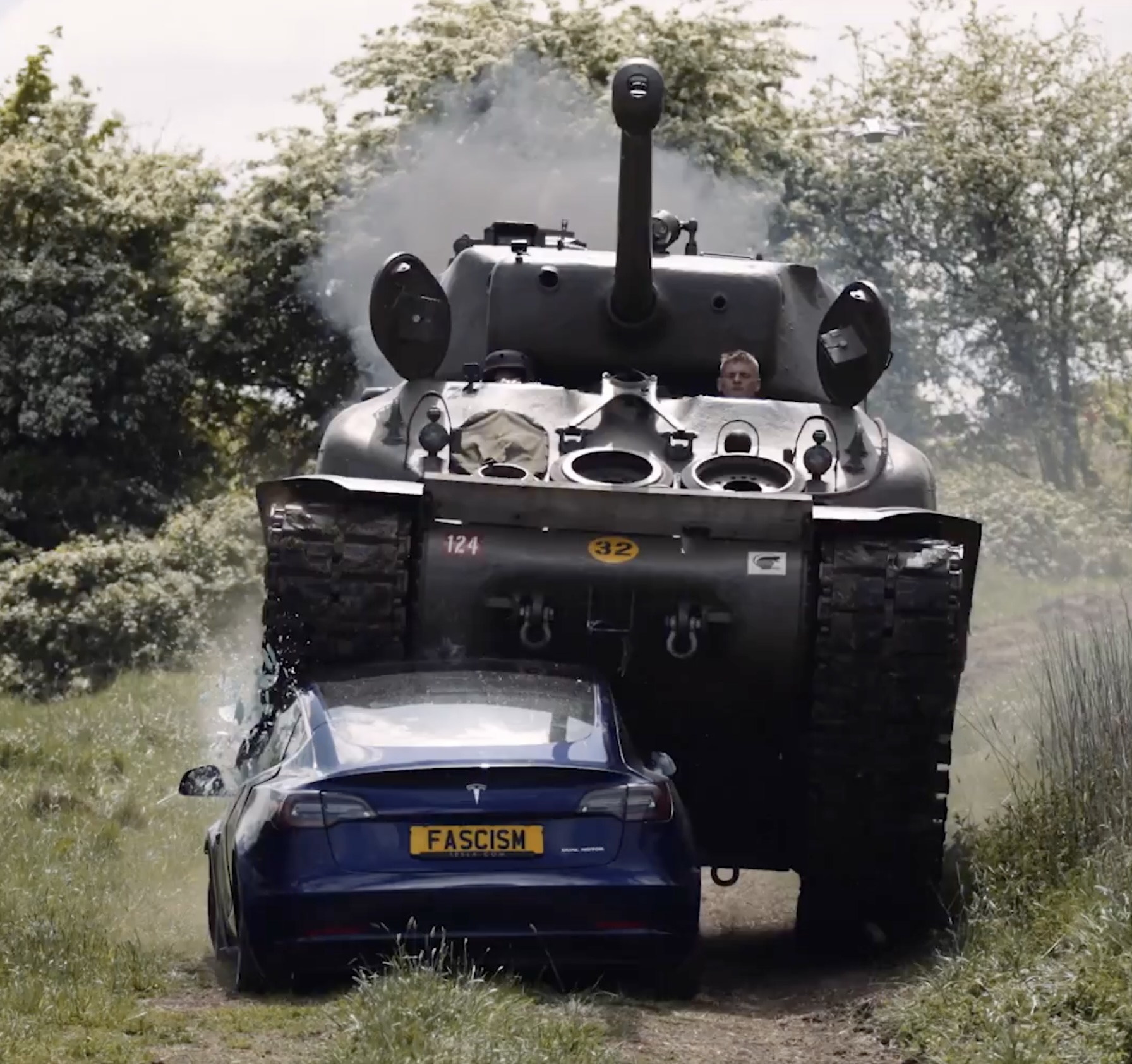
Anti-Elon Musk protesters and critics tend to show their disdain for the CEO in various ways, but a recent video from political action group Led By Donkeys definitely takes the cake when it comes to creativity.
Ironially enough, the group’s video also ended up highlighting something very positive for Tesla.
Tank vs. Tesla
In its video, Led By Donkeys featured Ken Turner, a 98-year-old veteran who served in the British army during World War II. The veteran stated that Elon Musk, the richest man in the world, is “using his immense power to support the far-right in Europe, and his money comes from Tesla cars.”
He also noted that he had a message for the Tesla CEO: “We’ve crushed fascism before and we’ll crush it again.” To emphasize his point, the veteran proceeded to drive a Sherman tank over a blue Tesla Model 3 sedan, which, of course, had a plate that read “Fascism.”
The heavy tank crushed the Model 3’s glass roof and windows, much to the delight of Led By Donkeys’ commenters on its official YouTube channel. But at the end of it all, the aftermath of the anti-Elon Musk demonstration ended up showcasing something positive for the electric vehicle maker.
Tesla Model 3 Tanks the Tank?
As could be seen from the wreckage of the Tesla Model 3 after its Sherman encounter, only the glass roof and windows of the all-electric sedan were crushed. Looking at the wreckage of the Model 3, it seemed like its doors could still be opened, and everything on its lower section looked intact.
Considering that a standard M4 Sherman weighs about 66,800 to 84,000 pounds, the Model 3 actually weathered the tank’s assault really well. Granted, the vehicle’s suspension height before the political action group’s demonstration suggests that the Model 3’s high voltage battery had been removed beforehand. But even if it hadn’t been taken off, it seemed like the vehicle’s battery would have survived the heavy ordeal without much incident.
This was highlighted in comments from users on social media platform X, many of whom noted that a person in the Model 3 could very well have survived the ordeal with the Sherman. And that, ultimately, just speaks to the safety of Tesla’s vehicles. There is a reason why Teslas consistently rank among the safest cars on the road, after all.
-

 Elon Musk5 days ago
Elon Musk5 days agoTesla investors will be shocked by Jim Cramer’s latest assessment
-

 News1 week ago
News1 week agoTesla Robotaxi’s biggest challenge seems to be this one thing
-

 Elon Musk2 weeks ago
Elon Musk2 weeks agoFirst Look at Tesla’s Robotaxi App: features, design, and more
-

 News2 weeks ago
News2 weeks agoSpaceX and Elon Musk share insights on Starship Ship 36’s RUD
-

 News2 weeks ago
News2 weeks agoWatch Tesla’s first driverless public Robotaxi rides in Texas
-

 News1 week ago
News1 week agoWatch the first true Tesla Robotaxi intervention by safety monitor
-

 News2 weeks ago
News2 weeks agoTesla has started rolling out initial round of Robotaxi invites
-

 Elon Musk2 weeks ago
Elon Musk2 weeks agoTesla to launch in India in July with vehicles already arriving: report

